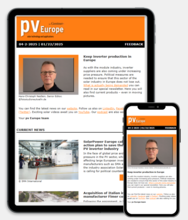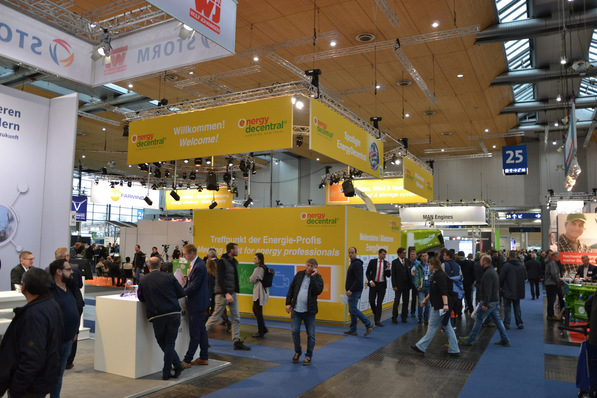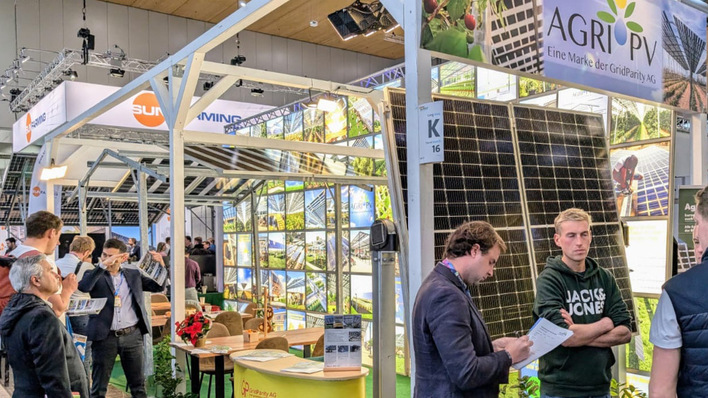The majority of farmers are considering investing in a photovoltaic system on their land or are in favour of building such systems. The prerequisite is that the land can continue to be used for agriculture. This is the result of a recent survey of farmers by the DLG as part of the Agri-PV Practice Monitor.
See also: Agrisolar: New digital map presents European projects
In this survey, 125 farmers were asked how favourably their businesses were disposed towards new technologies and development opportunities. At 83 per cent, most of the interviewed farms were full-time businesses with a size between 100 and 200 hectares of agricultural land. After all, three quarters of the interviewed businesses already had a photovoltaic system on their roofs and therefore already had experience with solar power generation.
Most farmers want to invest in PV
In the survey, 95 per cent of the interviewed farmers stated that they were interested in new production processes and technologies. Actually, 90 per cent are looking for new development opportunities for their businesses. Accordingly, interest in open-field and agri-PV systems is high. More than half of the farmers surveyed would invest in an open-field system. Another third would consider it if the agricultural use of the arable land could continue after the installation of the solar system.
Crops are the main focus, PV is only secondary
In a direct comparison between a normal solar park and an agri-PV system, the trend is towards an agri-PV design. The advantages in terms of crop production aspects are the main reason given by the interviewees. The interviewees see the possibility of optimising the solar system, for example by means of semi-transparent modules or trackers, to the detriment of the electricity yield, in order to optimise the light supply for the plants as the main production goal. Accordingly, farmers prefer tracker systems to fixed elevations, whereby it makes no difference to them whether the modules are installed vertically or horizontally – the decisive factor here is whether they can be driven on and used for agriculture.
Positive impact on biodiversity
But farmers also see other advantages of photovoltaics. This is because it can have a positive impact on biodiversity. Wind erosion on the surface is also reduced by the solar system. However, the fact that the solar systems provide shade for the plants or protect them from the weather plays a less important role for the farmers surveyed. However, this may be because the interviewees included few berry and fruit growers, as well as winegrowers.
Criticism of the bureaucratic burden
However, farmers also see some disadvantages. For example, they expect tight limits on the use of machinery to cultivate the land. By contrast, they see less of a problem with the plants being shaded by the agri-PV system. Farmers are also sceptical from a business point of view. Although they do see that agri-PV can provide them with a second source of income, they believe that investing in photovoltaics takes priority over other investments.
Furthermore, the farmers interviewed fear a high level of bureaucracy and uncertain framework conditions if they decide in favour of photovoltaics as an investment. This could indeed prevent investments.
Self-consumption in animal husbandry, dual use in arable farming
Self-consumption of the solar power produced plays only a minor role in the investment. The focus is on feeding the solar power into the grid. However, it depends on what the farmers produce. While farmers who mainly deal with crop production are less interested in using their own solar power, the situation is different for livestock farmers. These businesses have high energy consumption and they actually see using their own solar power as an opportunity to reduce their energy costs during periods of high energy prices. For these farmers, the interest in an east-west orientation of the solar system outweighs that of a south-facing installation of the modules.
Lack of information on regulatory issues
The farmers feel well informed about the technologies and their applications. However, there is great interest in information about the latest developments in the industry and in the area of legal frameworks. They also need support in taking the necessary steps to get their own solar system. Among other things, this involves questions of grid connection and building law. Thus, possible investments are prevented both by a sluggish grid expansion and by the fact that the municipalities partially limit the usable areas. In addition, there are difficulties in coping with the grid operators, in solving building law problems and when it comes to the question of whether the area can be used again as before.
Also interesting: Dual use of land: New special on Agri-PV
You will receive support on legal and regulatory issues at EnergyDecentral. Here you can come into direct contact with suppliers from the solar and storage industry as part of the solar offensive and discuss specific steps for implementing your agri-PV project. You will also receive extensive information from the speakers on the Spotlight Solar Offensive stage. (su/mfo)








